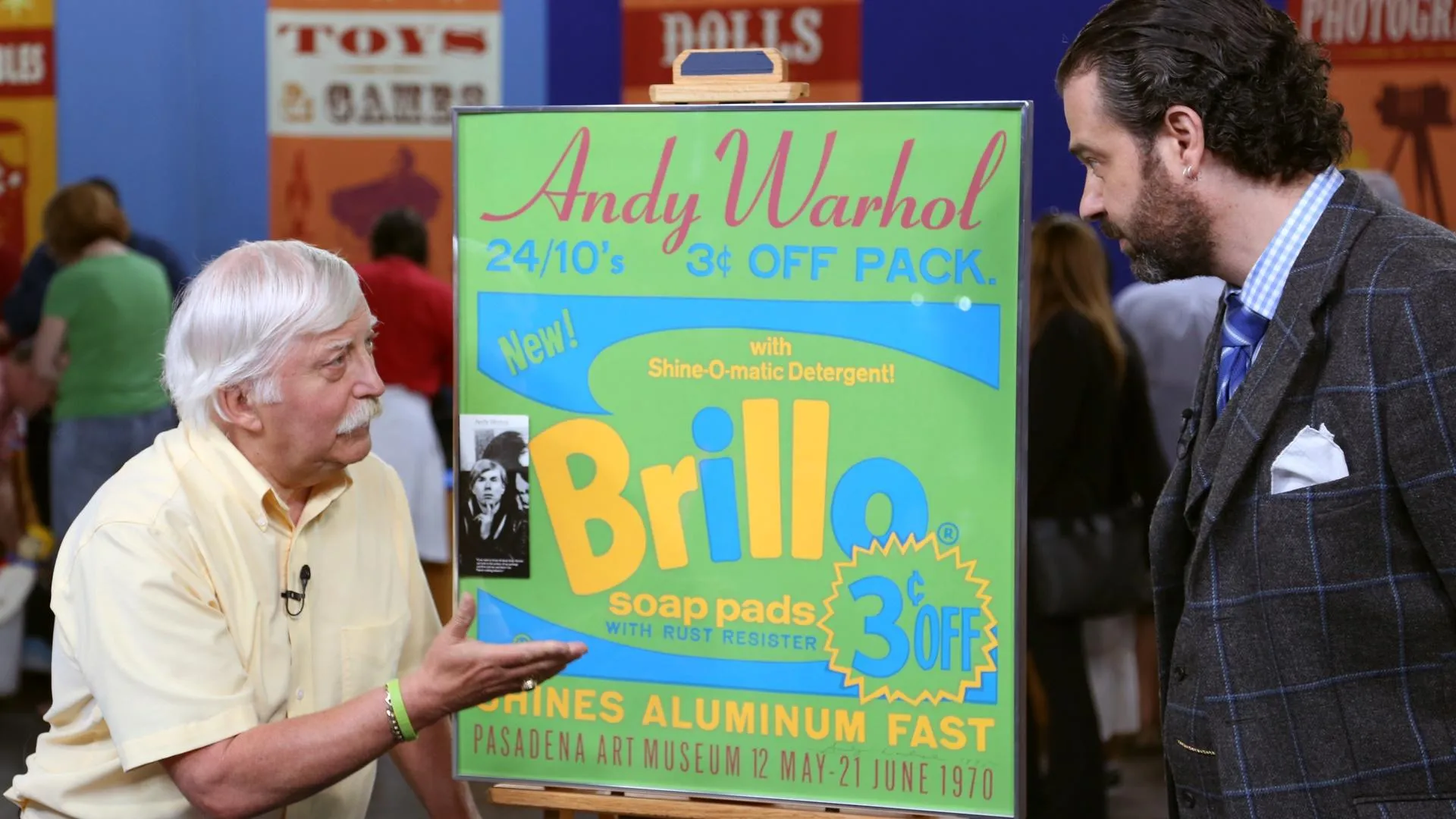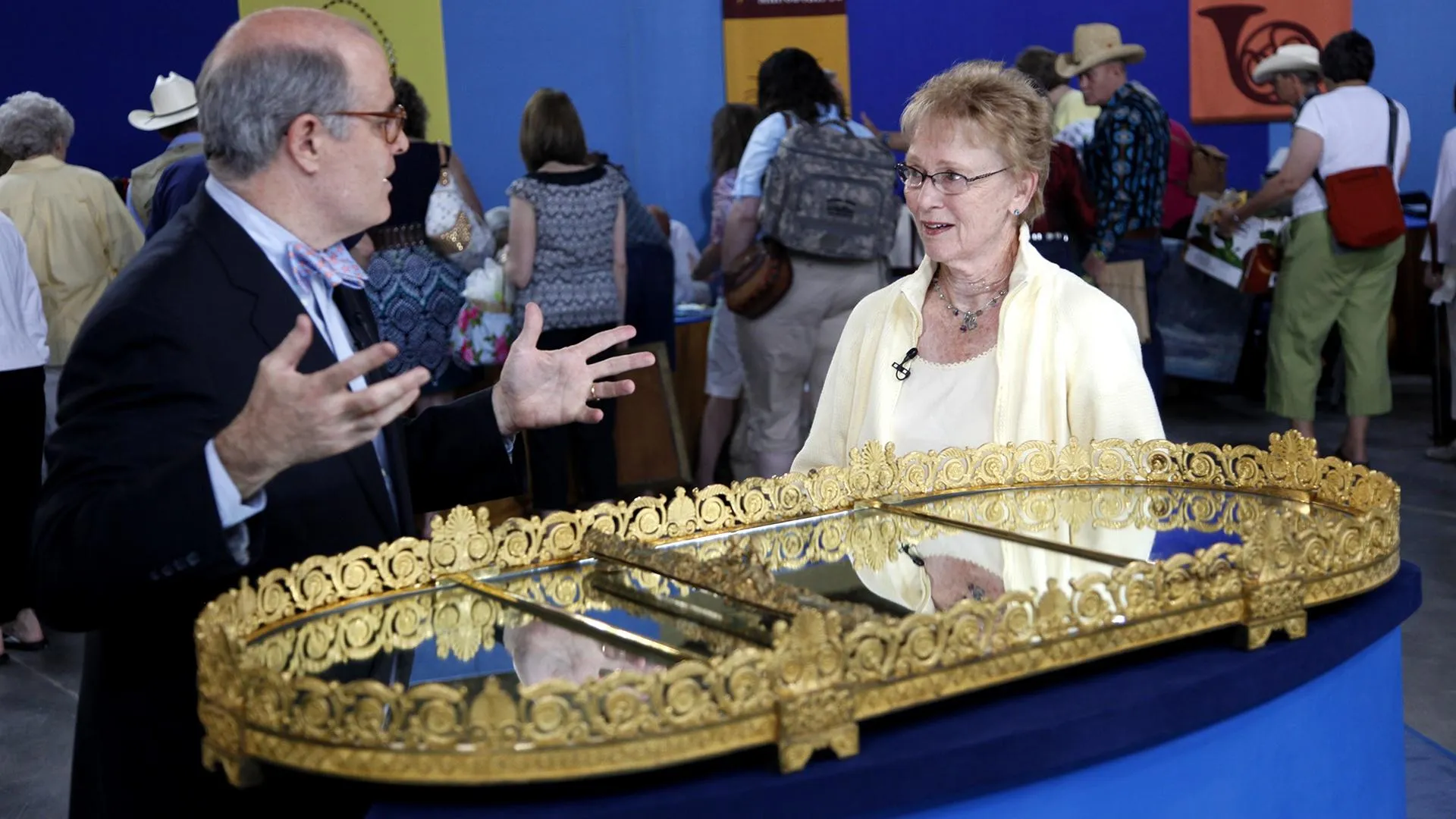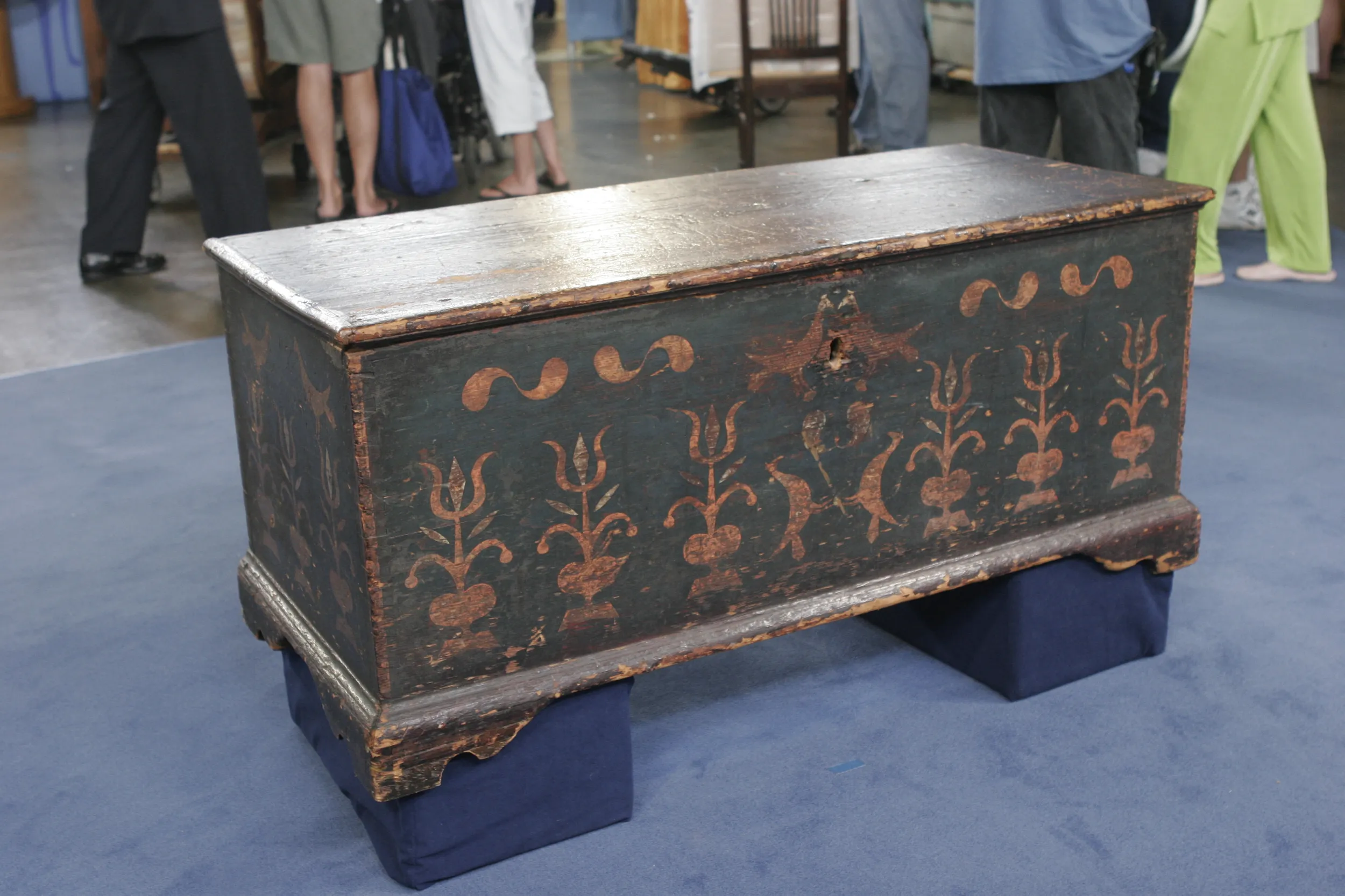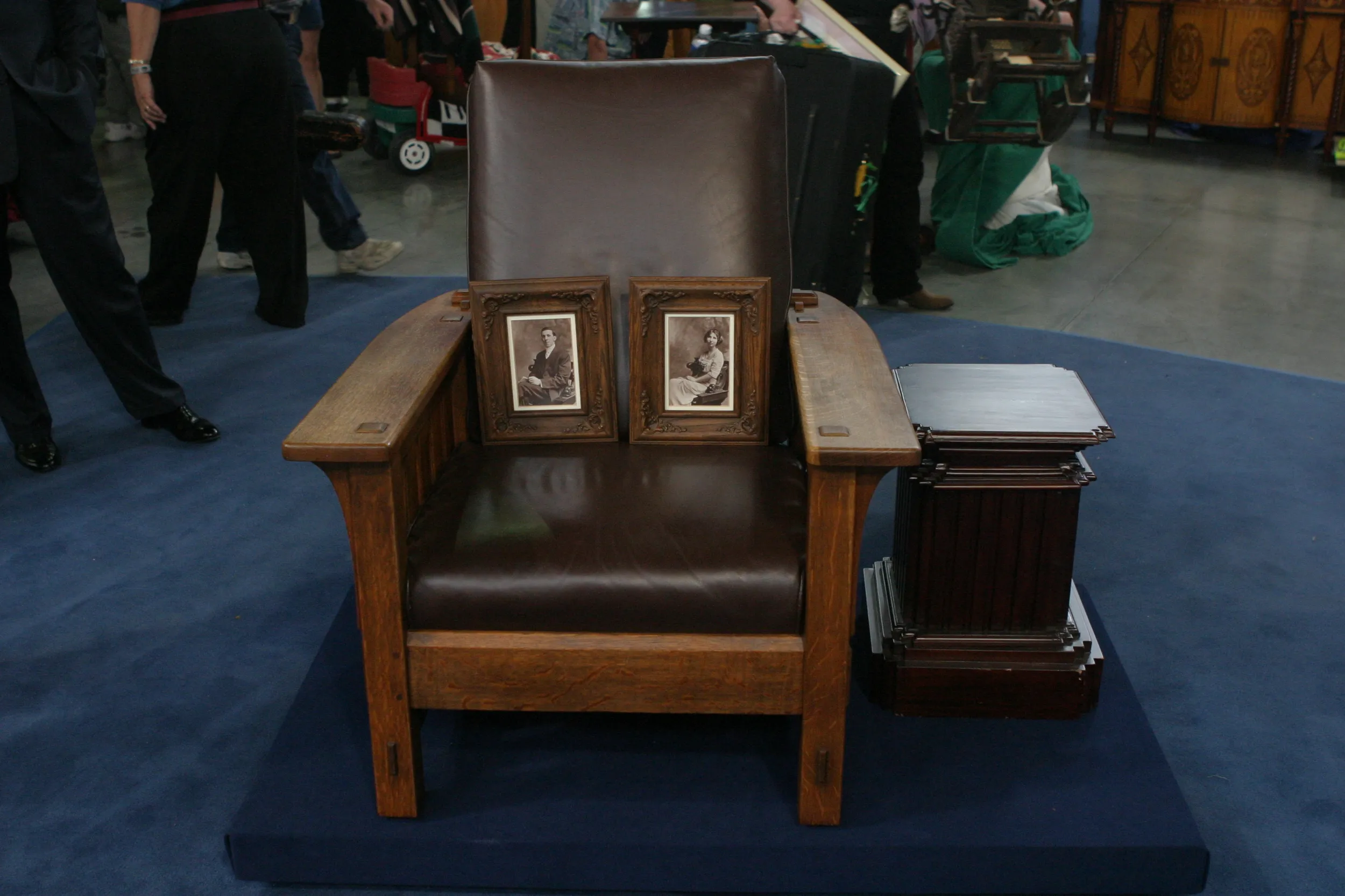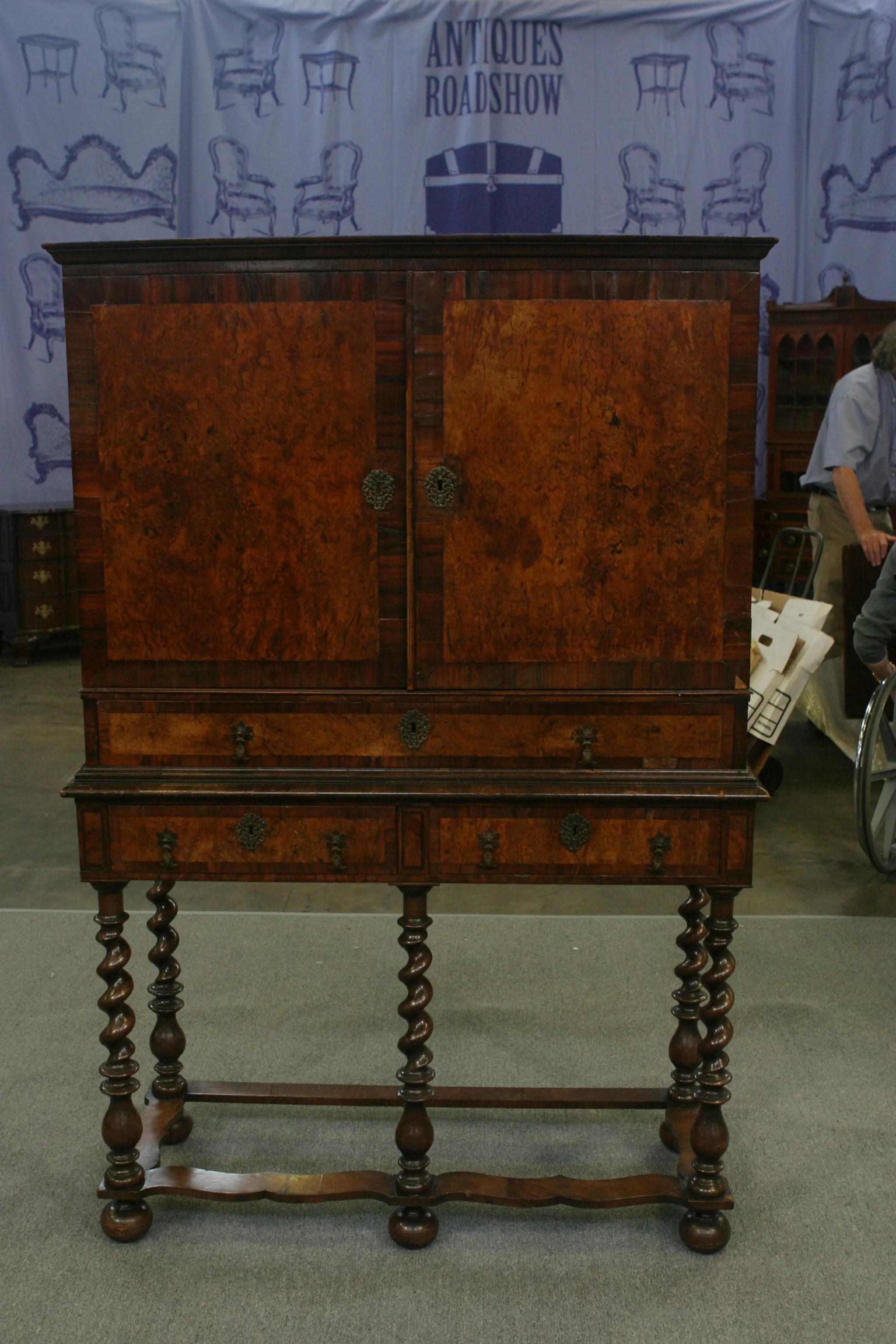GUEST: It principally has been used as a decorative piece in my living room, and it sits under a large Federal mirror. It was more or less a gift.
APPRAISER: These are so-called architect's tables. When this piece was made about 1725, 1730, it was a brand-new form of furniture, and it was really answering the needs of landed gentry. They would have done architectural renderings, perhaps, on something like this, maybe a little reading on it. A little bit of the sort of Downton Abbey, Lord Grantham connection. This was an elegant, elegant, high-style piece of furniture. It's also very functional. The table extends and makes a larger flat area. Then if you want, you can turn this into a little lectern. Perhaps that's where your book would be or your watercolor would be. And then further, there's lots of cubbyholes in this piece. Underneath, a great spot for storage. Little side panels here, which open up for drawers. This drawer is filled with ink. And then your side has got a door. I also love what's inside. Looks like William Morris wallpaper from about 1890 or so that someone had fun in there. I imagine a child...
GUEST: I know! It's like somebody's kid was in there, right?
APPRAISER: It's like a dècoupage. It's so charming. And then on my side, there are three graduated drawers so you can have a lot stored in this piece, a lot of your artist's supplies. But then also, as we close it, an elegant piece of early Georgian furniture. It really reminds me of some of the early pieces that we see made in Boston. And there are details on this piece which really make it elegant, and I wanted to just draw attention to the three Corinthian columns across the front, which hold up these lovely curved arches. And you can see they're all inlaid. And then the reeded columns taper, which is just what you want to see, and that makes the form light. They spared no expense when it came to finding the most lovely wood they could with burled veneers. In today's modern living, there's not a lot of use for something like this, and so it affects its value. Have you ever had it appraised before?
GUEST: I had it appraised back, oh, 30 years ago for $10,000.
APPRAISER: We're seeing that material which was very sought after by a certain generation is now less sought after, and the brown furniture has taken a hit. If this were to come to auction, we'd put a conservative estimate of $4,000 to $6,000. If you're insuring it, I would say $12,000, $15,000 for a piece like this.
GUEST: Thank you so much for everything you've taught me about it.

